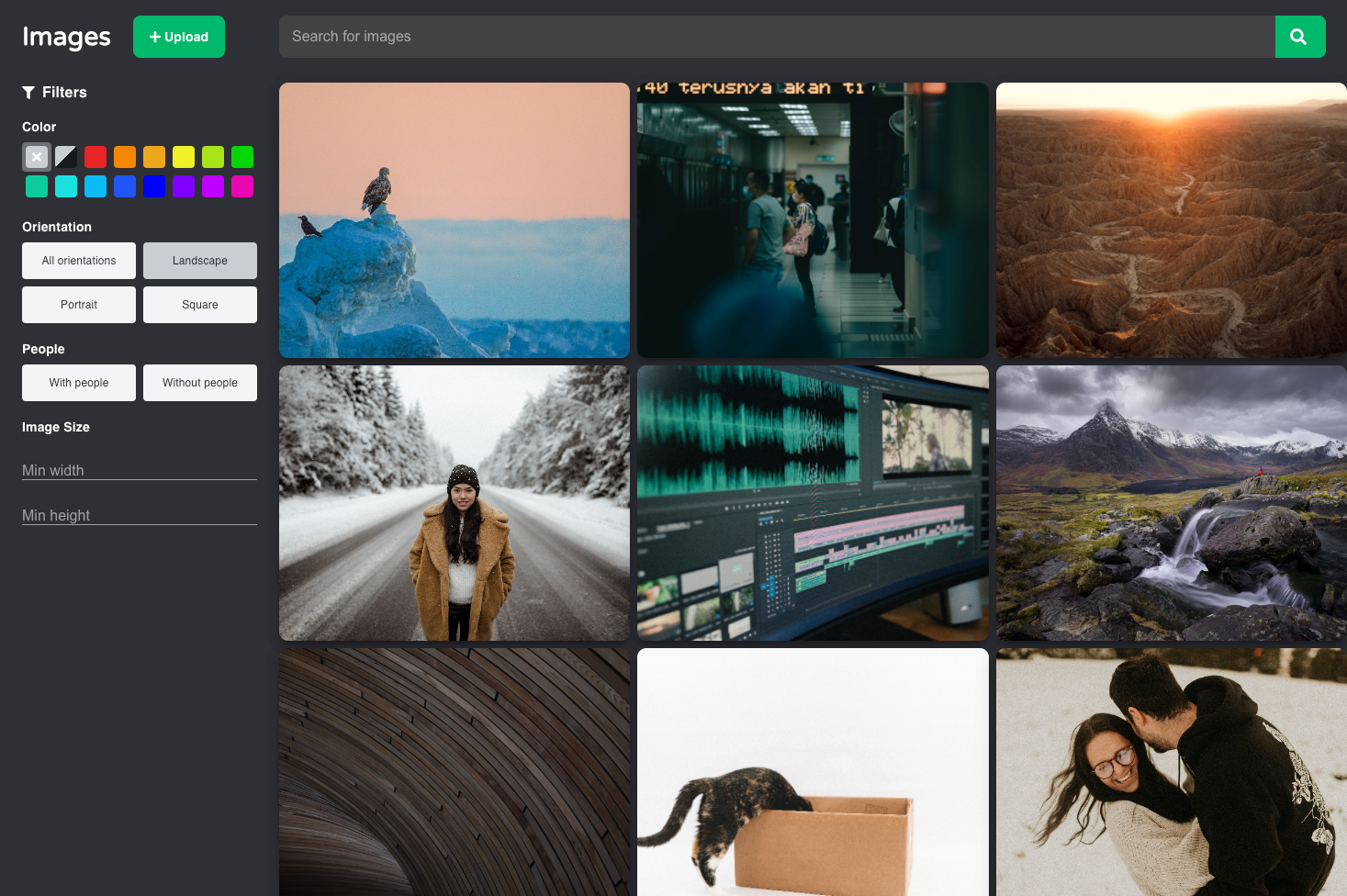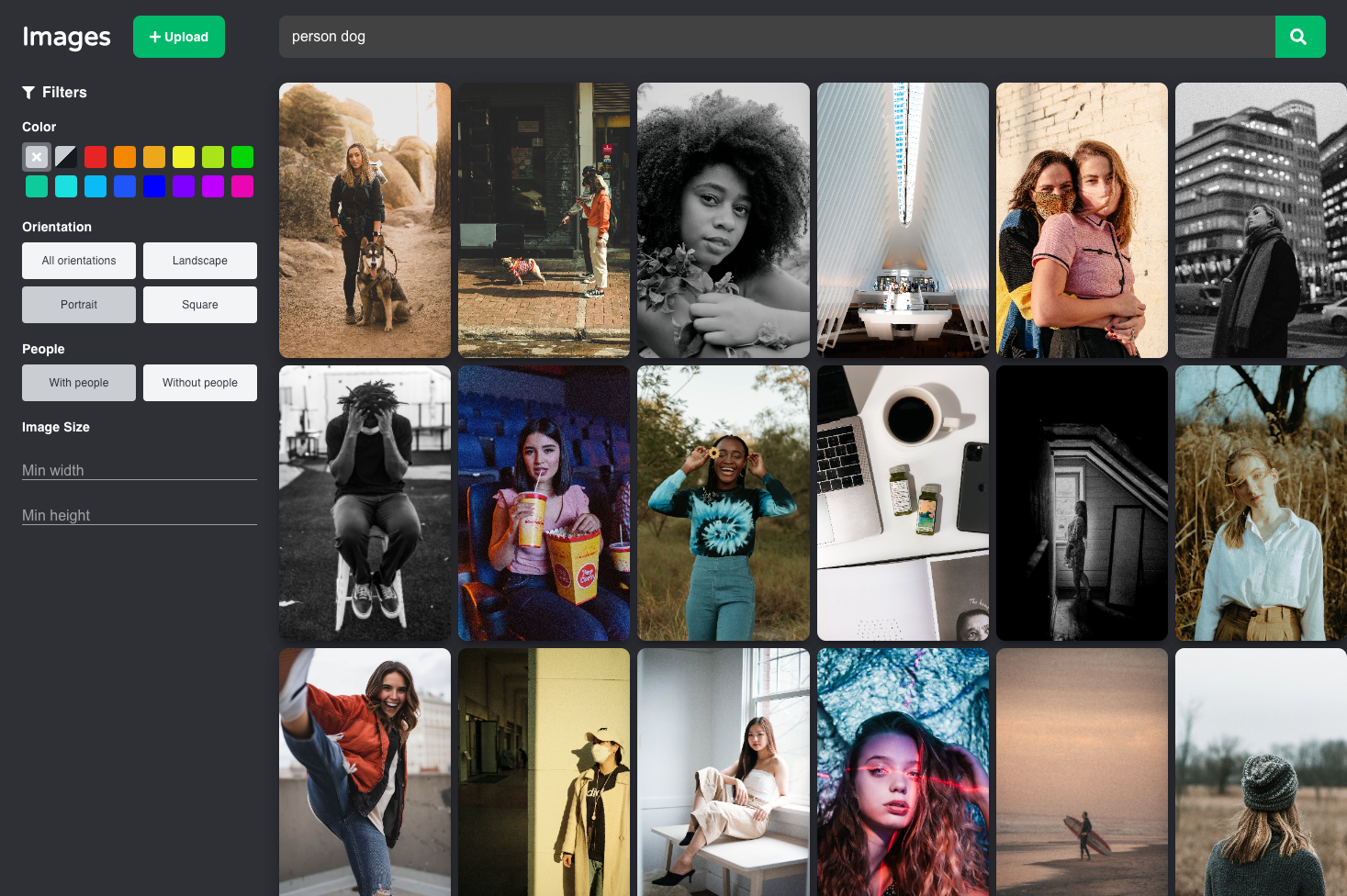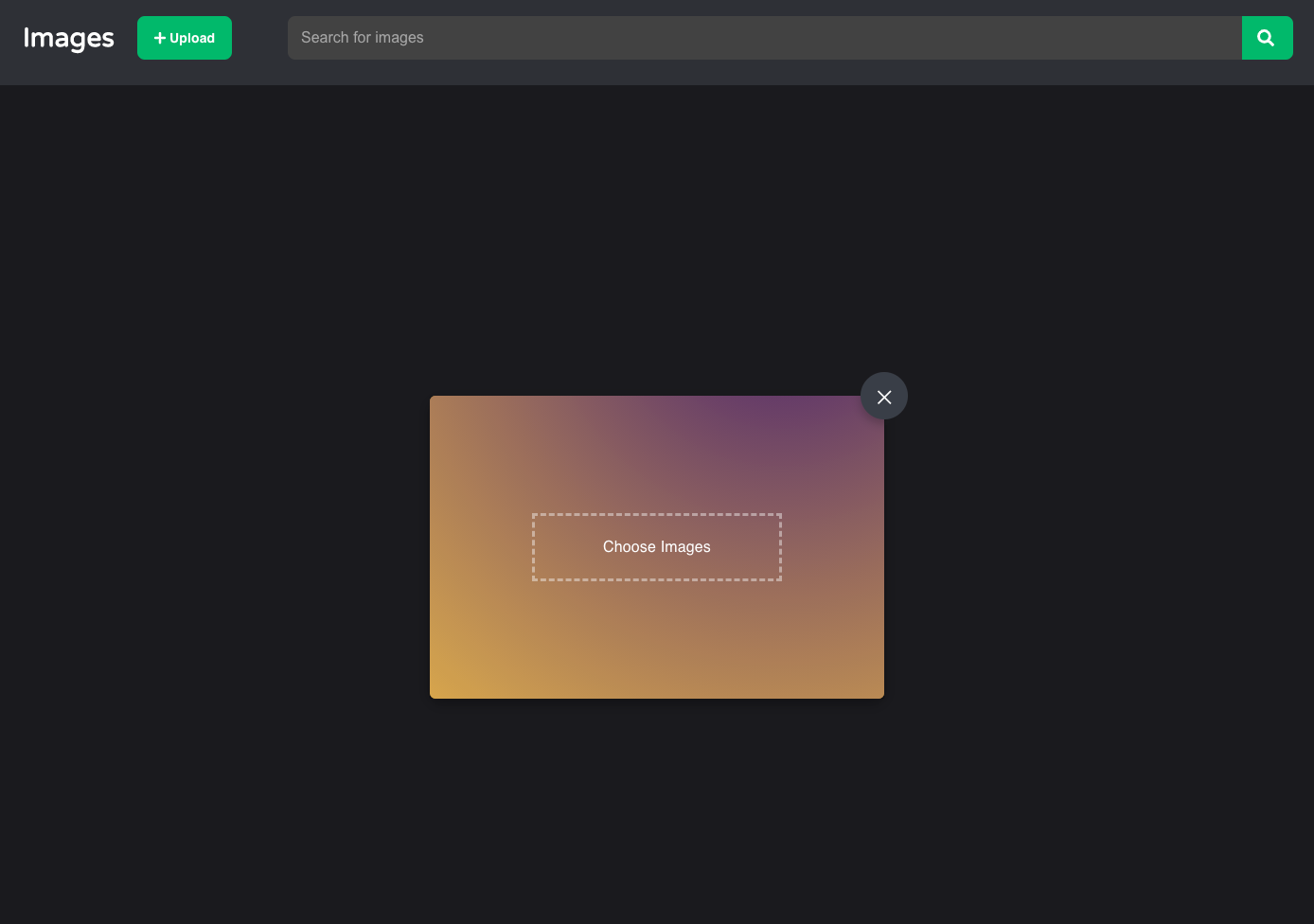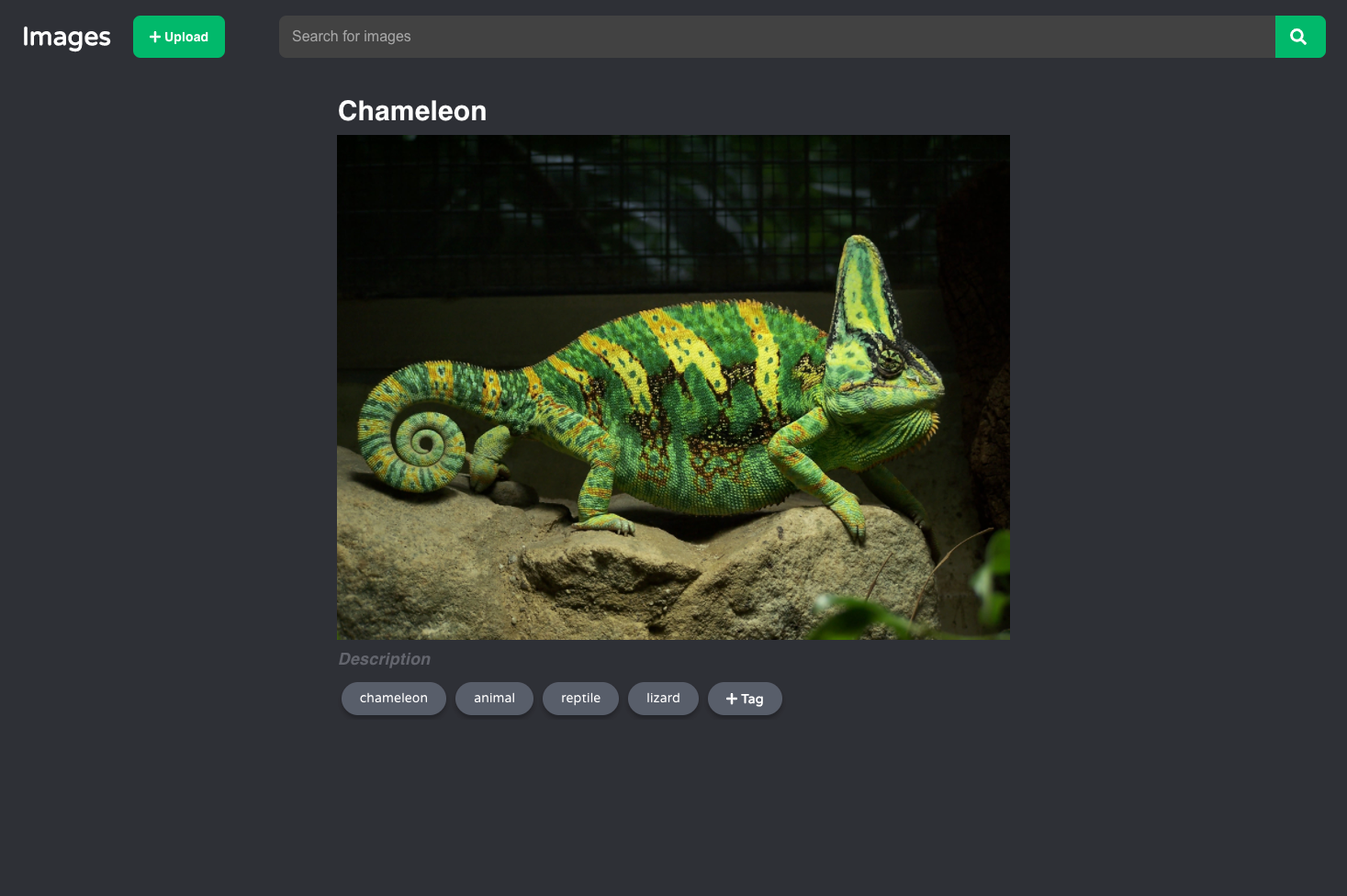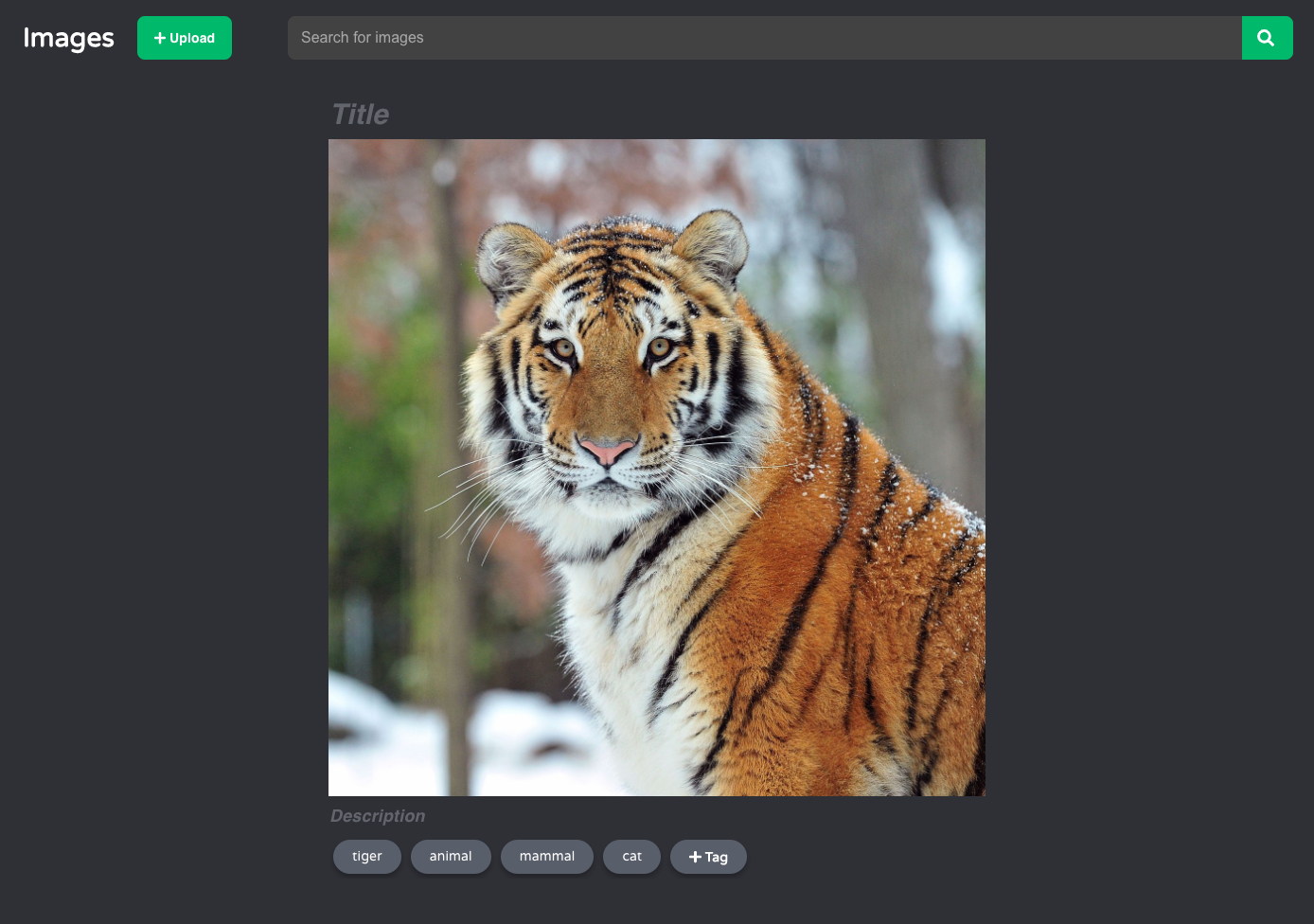It includes a complete front and back-end, as well as an AI powered microservice that provides automatic tagging of prominent image features. I had a ton of fun working on this, even though it did end up being a lot more than I originally set out to do. Below, you can find a description of the different components, some instructions on how to run it, and finally some screenshots of the front-end.
.
├── client # front-end
├── examples # example screenshots
├── nginx # nginx configuration
├── resizer # microservice
├── scripts # misc. scripts
├── server # back-end
└── tagger # microservice
Front-end written in typescript using react and redux. The LayoutEngine is the class responsible for laying out the images into nice square grids (most of the time). Since design isn't my strong suit, I ended up taking a number of concepts and themes from both Imgur and Shutterstock.
A microservice written in python that generates scaled down versions of images for use as thumbnails. This was added to hopefully address the poor performance in the gallery view caused by large resolution images downloaded from unsplash. Update - this worked really well and performance is now a lot better.
Contains miscellaneous scripts used during development. The upload_images.py
script makes it easy to upload an entire folder of images. Simply pass the path
to the folder of images when calling the file. Example: upload_images.py <path>
This the main server and it's built with RoR configured in API only mode. It can operate independently of the two microservices. This is my first project ever in both Ruby and Rails so please forgive any anti-patterns or bad code. The api is fully documented in the controller's but in short it supports:
- Getting images and image thumbnails
- Uploading single/multiple images
- Editing/deleting images
- Searching images using a number of criteria (powered by elasticsearch)
- Secret key based authentication for editing/deleting images
- Add/delete tags
I tried to use as many of these things in the front-end as possible to showcase the different things it supports, but some things may have been left out for time.
A microservice written in python that analyzes and generates tags for images using AI. Before this project, I wanted to learn more about machine learning so I experimented with a number of different frameworks including pytorch, tensorflow, detectron2. In the end, the best combination of perfomance, number of classes and accuracy was acheived by using three different pre-trained models running on pytorch: YOLO v5, Shufflenet v2 and Mobilenet v2. The multiple modles, in combination with the hand-annotated labels results in pretty accurate tags being generated for most images. The tagger performs the best with images of people, animals and more common household objects. It won't produce any results for non-photo images.
Note - Both the tagger and resizer require Python 3.8.
docker-compose upcd client && npm install && npm startcd server && rails scd tagger && pip install -r requirements.txt && python main.pycd resizer && pip install -r requirements.txt && python main.py
The last two are technically optional but highly recommended.
A good place to download sample images in bulk is from http://unsample.net/.
Select the number of images you wish, click download and unzip the folder. Then use the upload_images.py
script in /scripts to upload the entire folder at once. Depending on how many images are in the folder,
this can take a couple of minutes to do, and may produce a couple of 504 errors along the way.

